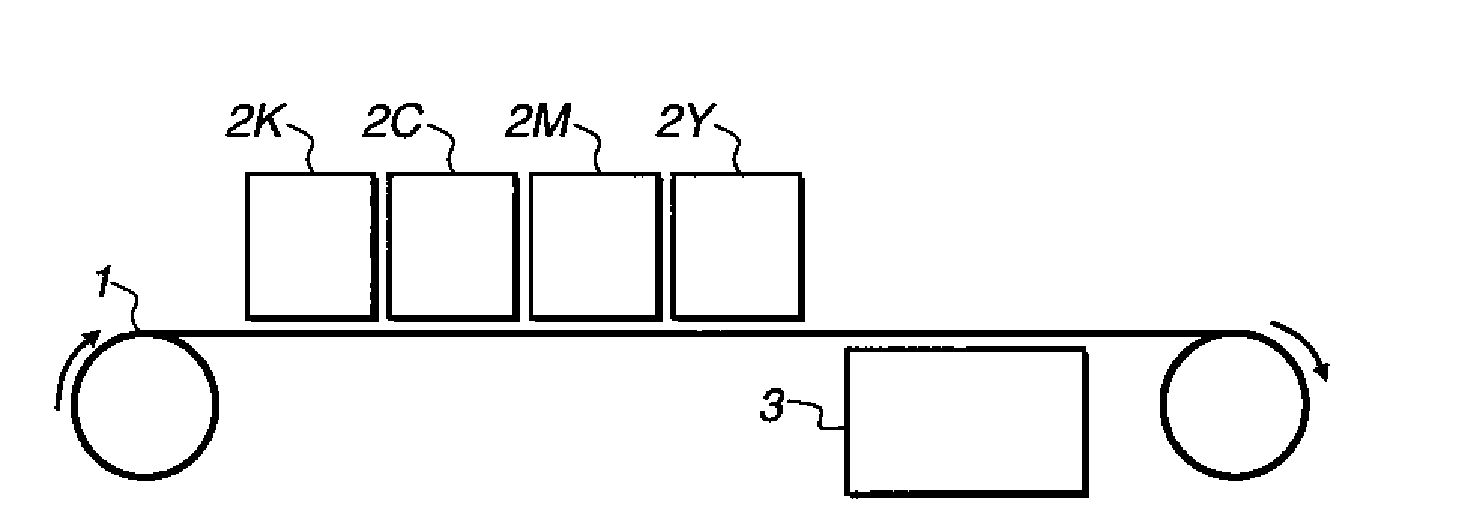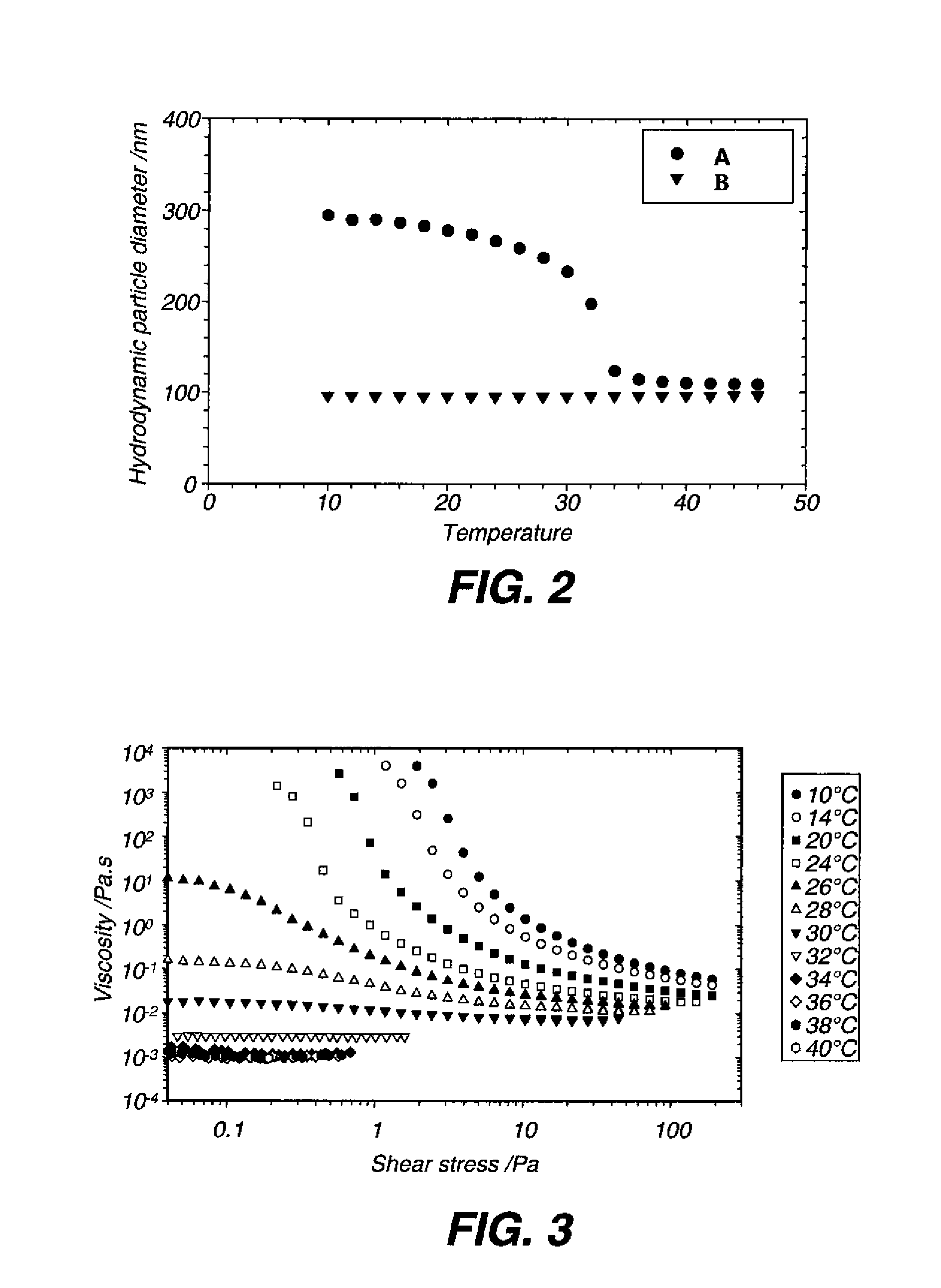Inkjet printing system
a printing system and inkjet technology, applied in the direction of inks, instruments, measurement apparatus components, etc., can solve the problems of water having a very high surface tension, water the nature of the surface, especially its surface energy, can still present difficulties, etc., to improve image registration, reduce the cost, the effect of increasing the printing speed
- Summary
- Abstract
- Description
- Claims
- Application Information
AI Technical Summary
Benefits of technology
Problems solved by technology
Method used
Image
Examples
example 1
Preparation of Thermally-Responsive Polymer Particles
[0081]15.8 g N-isopropylacrylamide (obtainable from Aldrich), 0.301 g N,N′-methylenebisacrylamide (obtainable from Aldrich) and 0.31 g sodium dodecyl sulfate (SDS) were added to a 11 double-walled glass reactor equipped with a mechanical stirrer and condenser. 900 ml water was added and the mixture warmed to 40° C., purged with nitrogen for 30 min. while being stirred at 500 rpm. The solution was then heated to 70° C. and 0.60 g potassium persulfate initiator (dissolved in 100 ml deionised water which had been purged with nitrogen) was added quickly to the reactor. The mixture was stirred at 400 rpm at 70° C. for 5 h under nitrogen. The reaction mixture rapidly became opalescent then became white. The heating was switched off and the mixture left to cool down to room temperature. The reaction yielded a white latex which was filtered, then dialysed until the conductivity of the permeate was less than 10 μS. The dialysed latex was ...
example 2
Preparation of a Typical Pigment Dispersion
[0086]30 g Monarch 880 carbon black (Cabot) was mixed with 214.4 g demineralised water, followed by 55.6 g Joncryl™ HPD96DMEA dispersant (available from Johnson Polymer). Zirconia beads of 0.6-0.8 mm diameter were added to the mixture, which was milled until the carbon black could not be milled down further. The zirconia beads were removed by filtration leaving a black dispersion with a mean particle size of 98 nm.
example 3
Preparation of a Dye-Based Ink A Comprising Thermally-Responsive Particles
[0087]13.3 g of the 15.0 wt % solution of a black dye, Duasyn™ KRL-SF, was mixed with 66.7 g of a 7.5 wt % aqueous solution of the thermally-responsive polymer particles from Example 1, 0.5 g of the fluorocarbon surfactant Zonyl™ FSN and sufficient demineralised water was added to form 100 g of ink.
PUM
 Login to View More
Login to View More Abstract
Description
Claims
Application Information
 Login to View More
Login to View More - R&D
- Intellectual Property
- Life Sciences
- Materials
- Tech Scout
- Unparalleled Data Quality
- Higher Quality Content
- 60% Fewer Hallucinations
Browse by: Latest US Patents, China's latest patents, Technical Efficacy Thesaurus, Application Domain, Technology Topic, Popular Technical Reports.
© 2025 PatSnap. All rights reserved.Legal|Privacy policy|Modern Slavery Act Transparency Statement|Sitemap|About US| Contact US: help@patsnap.com



